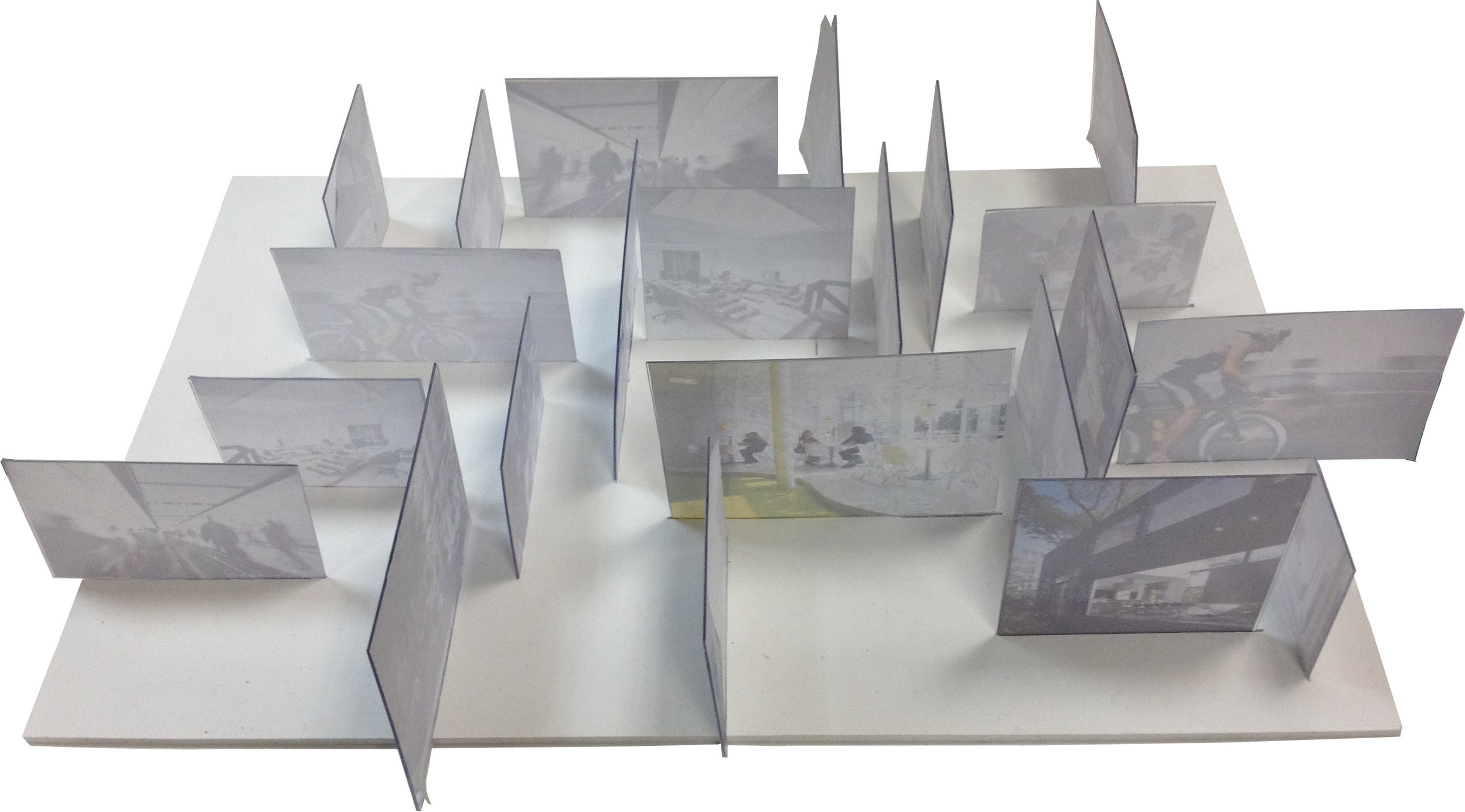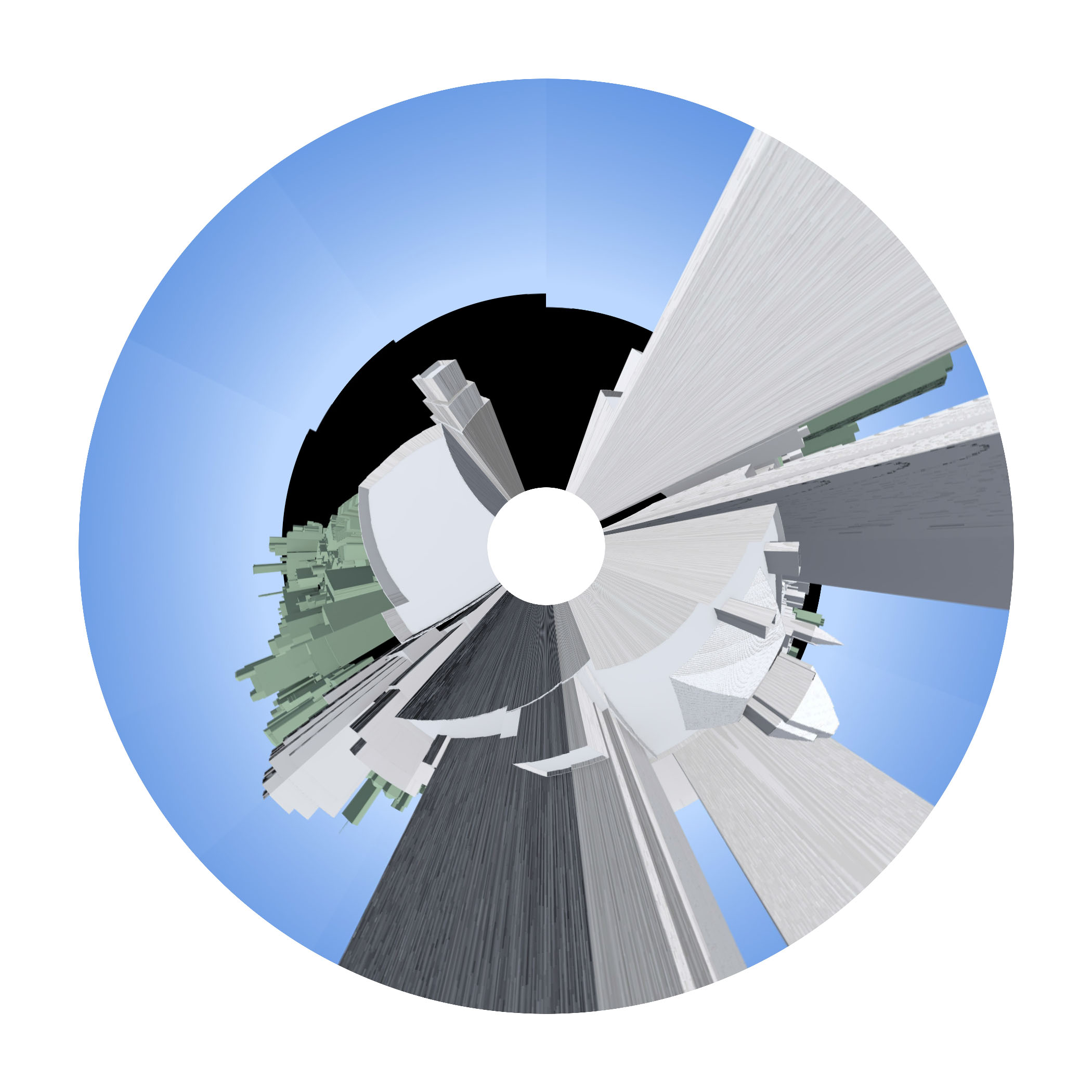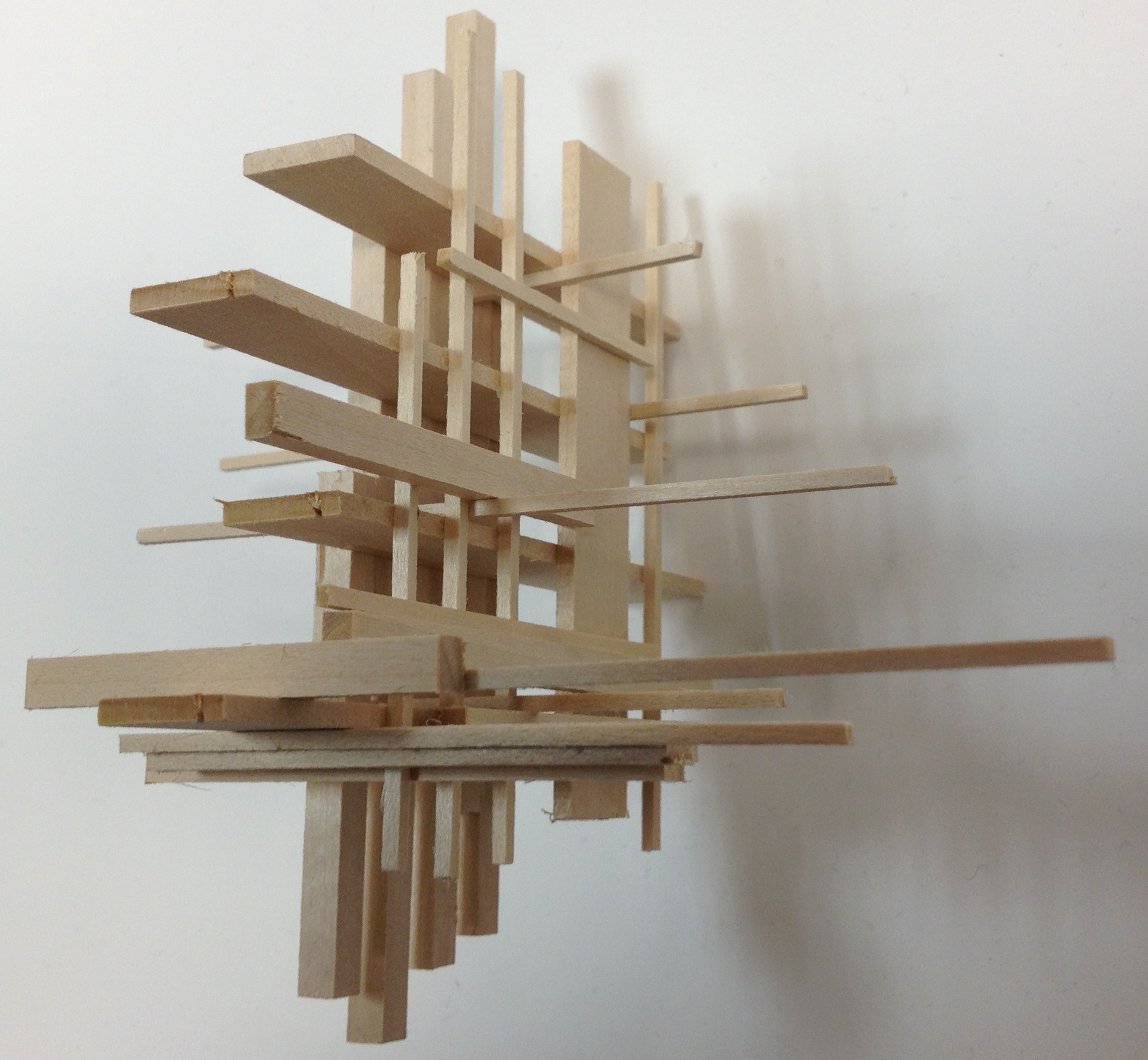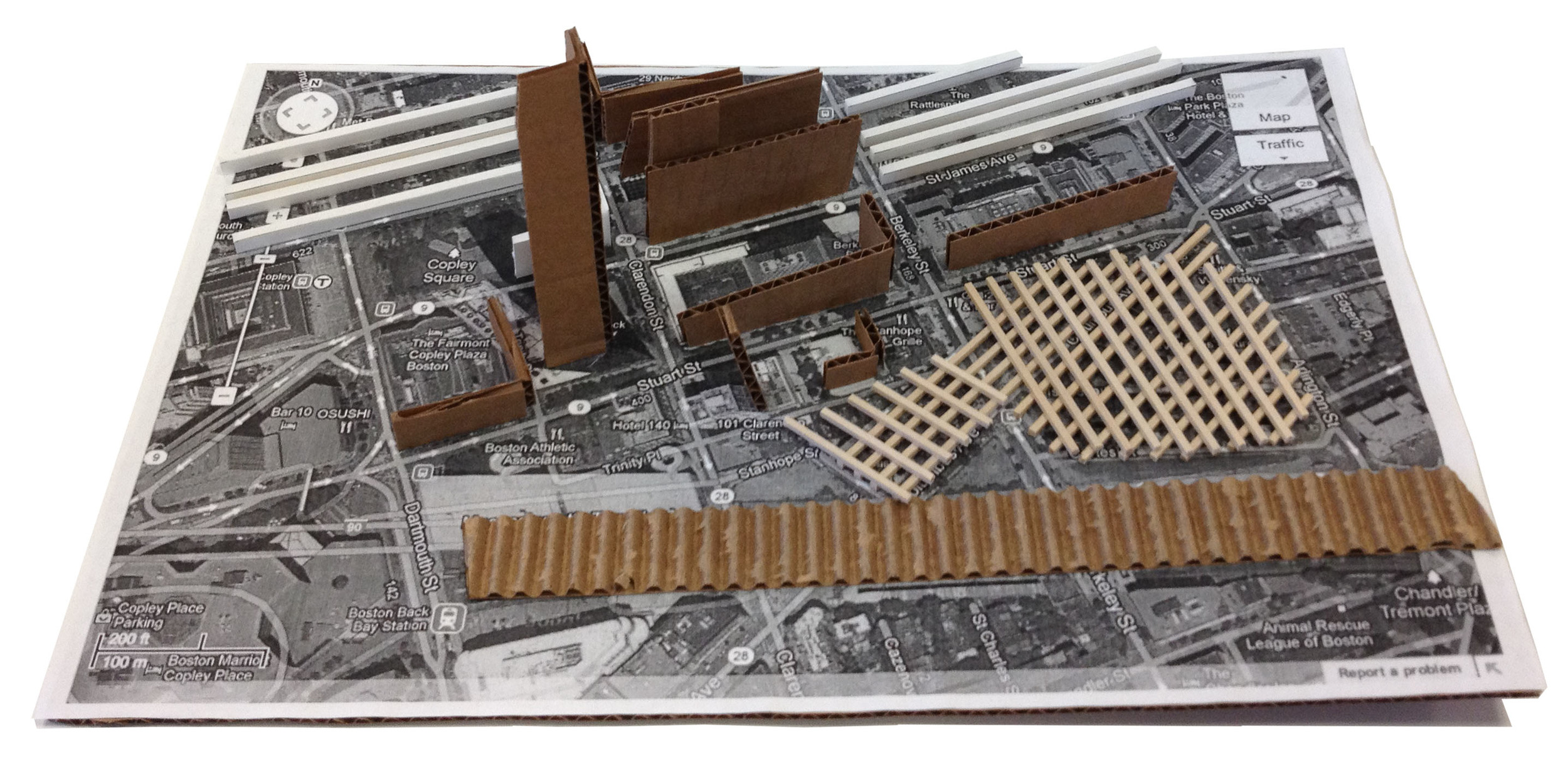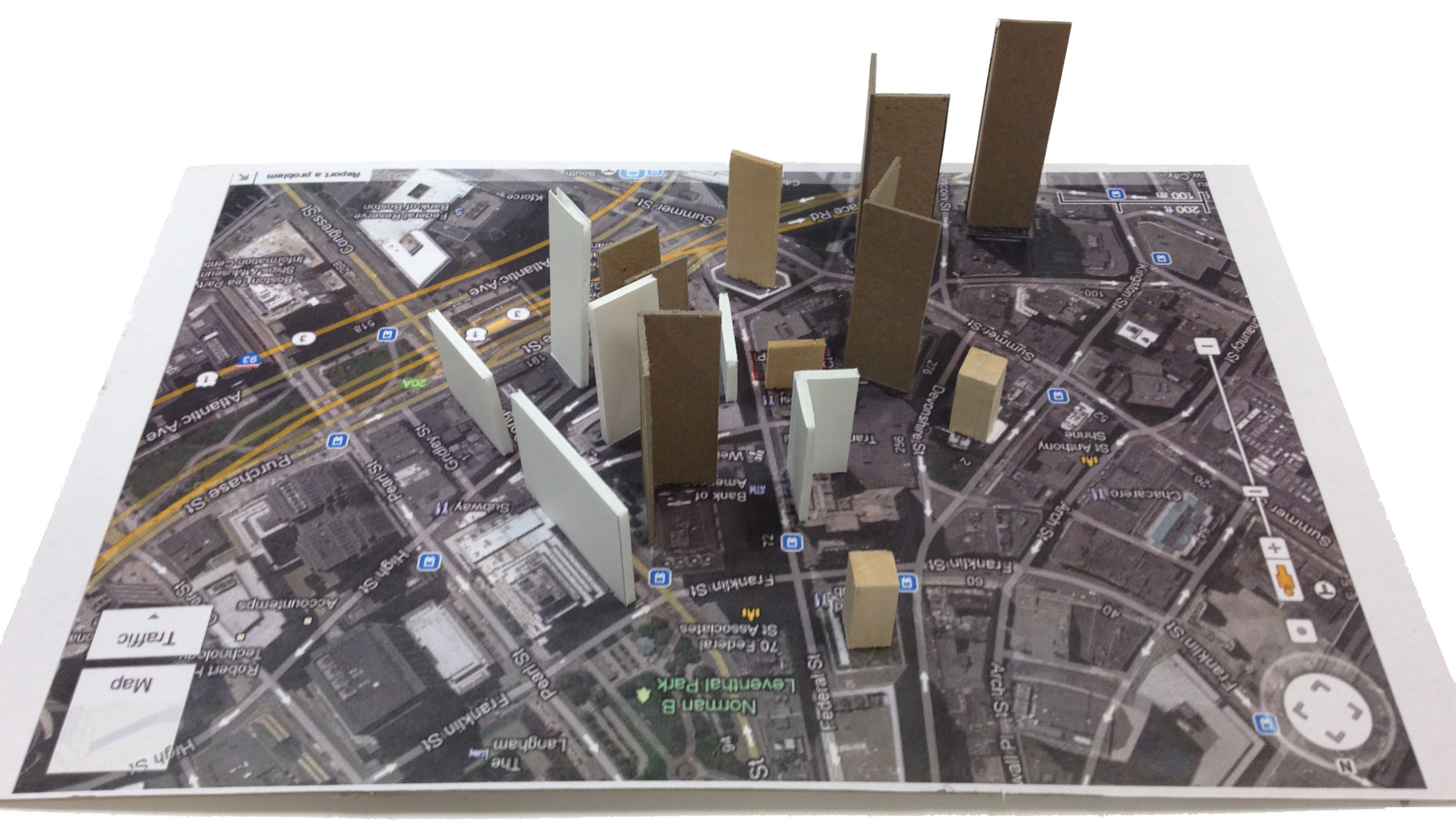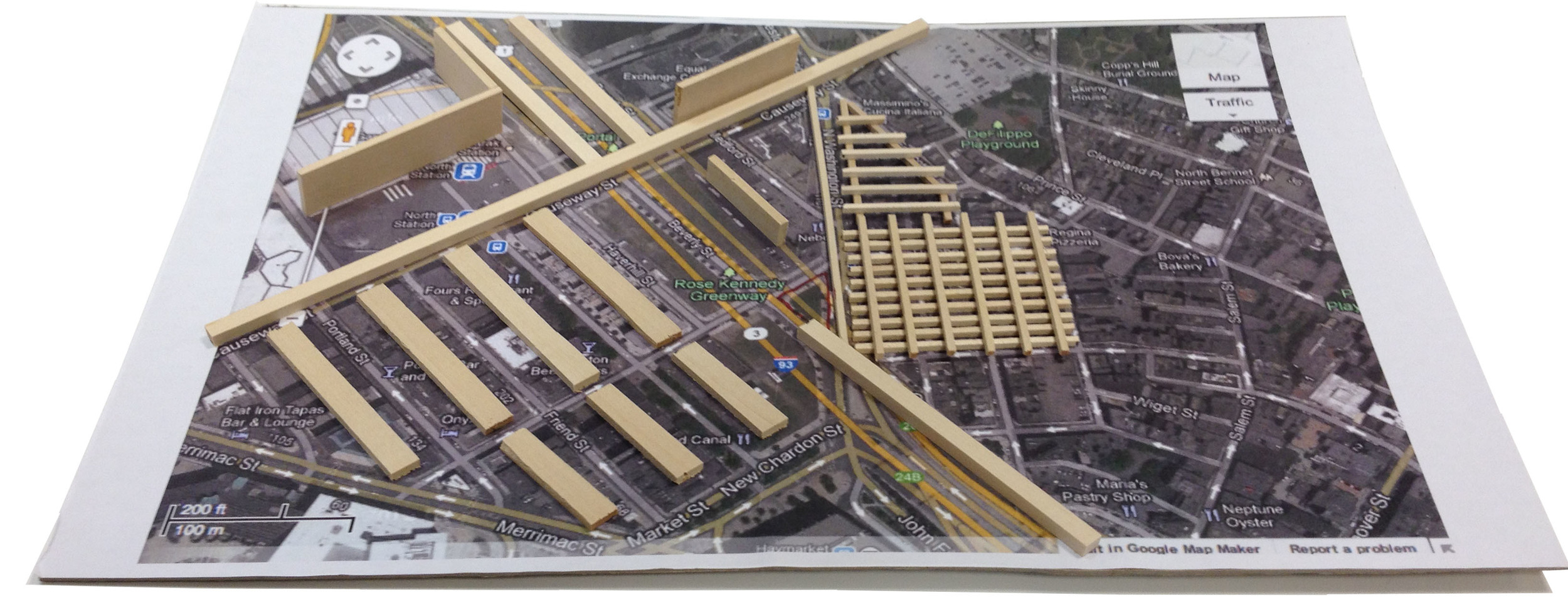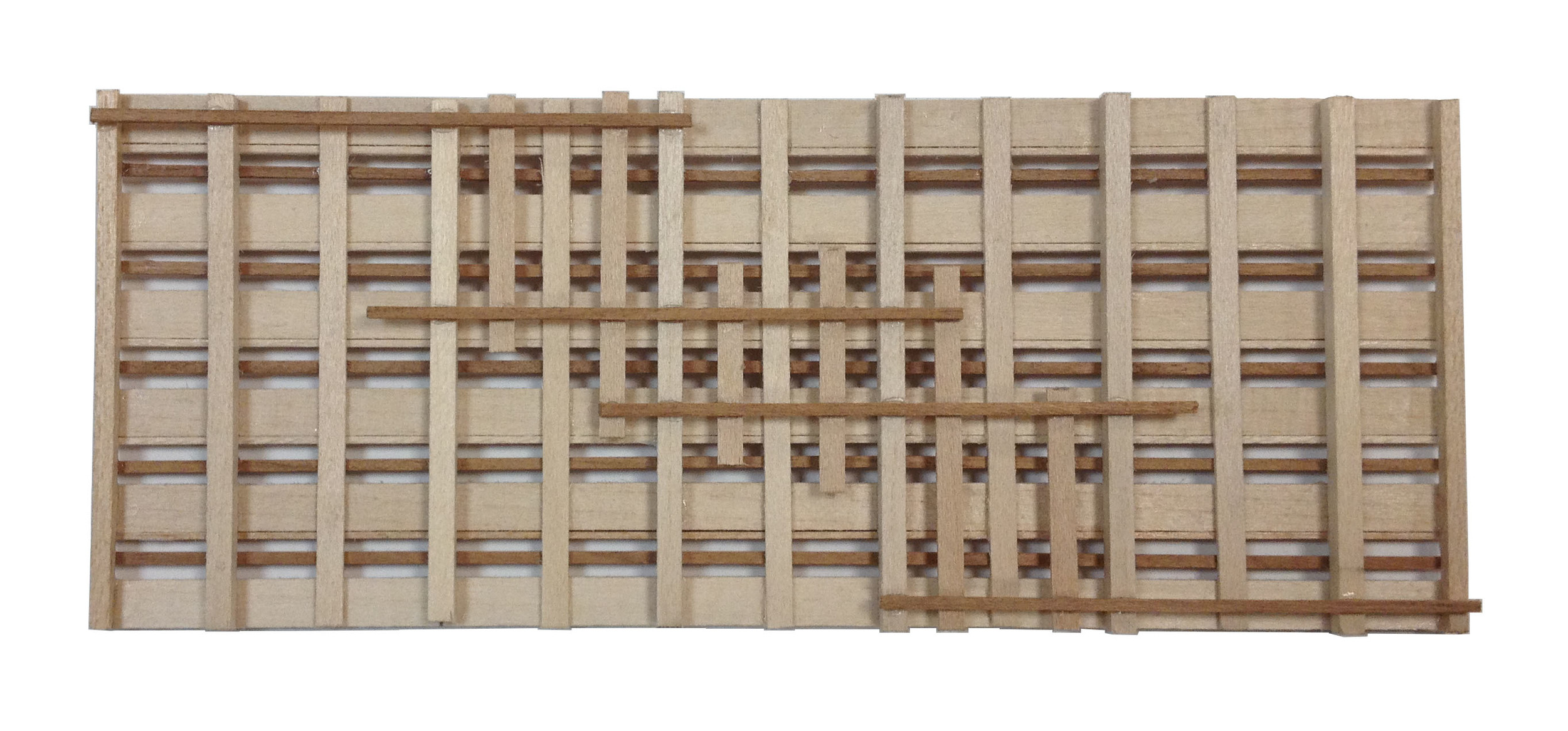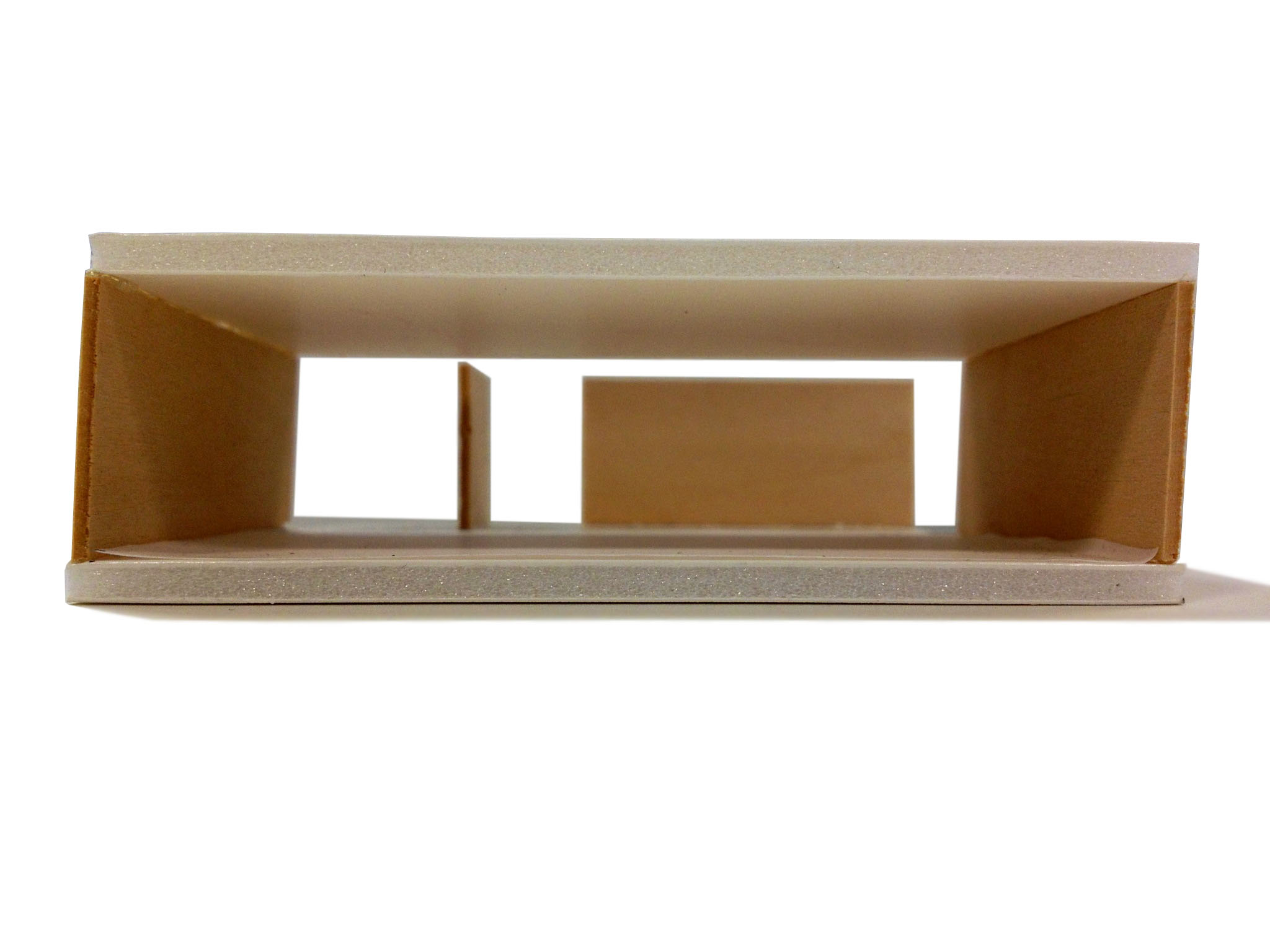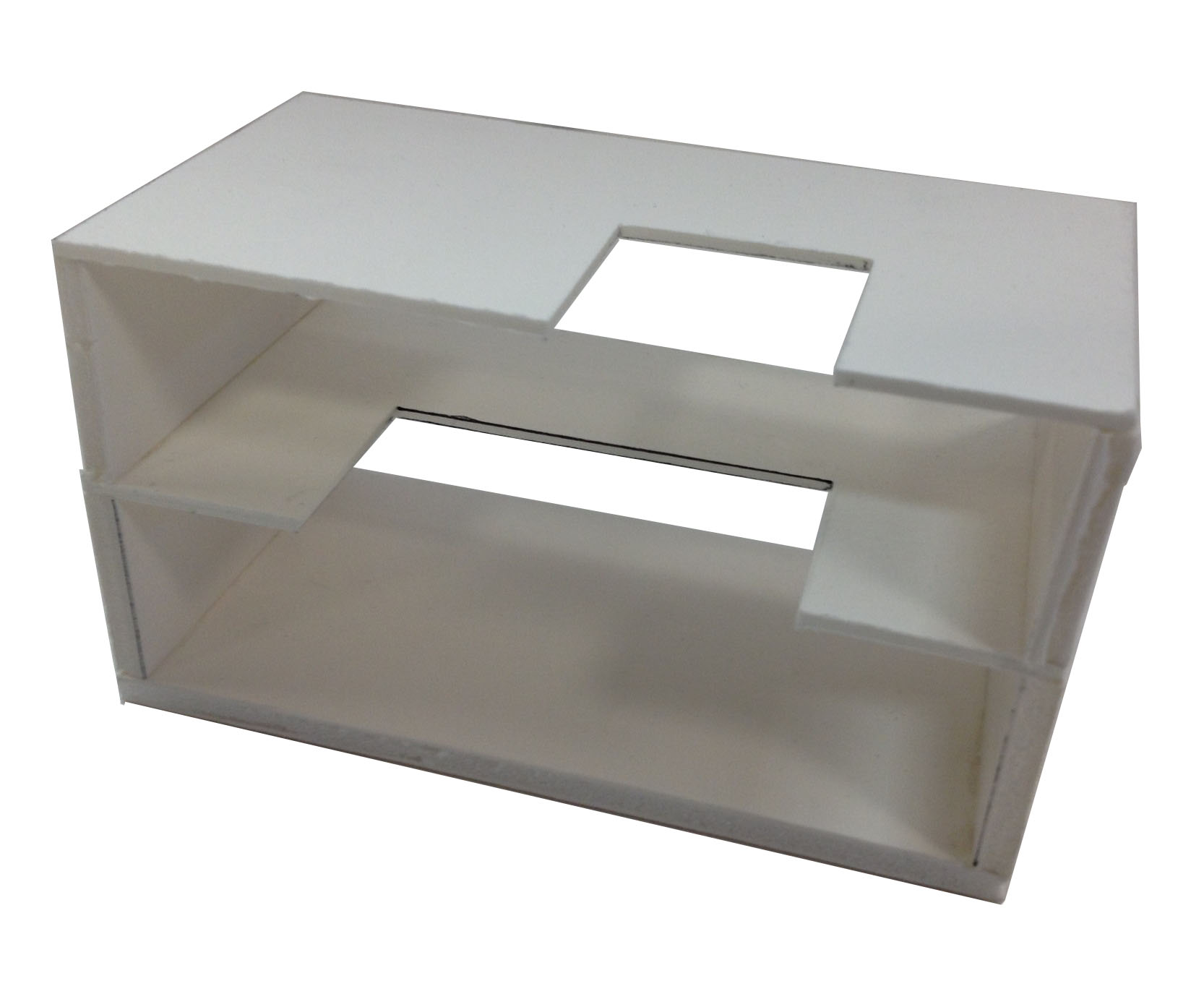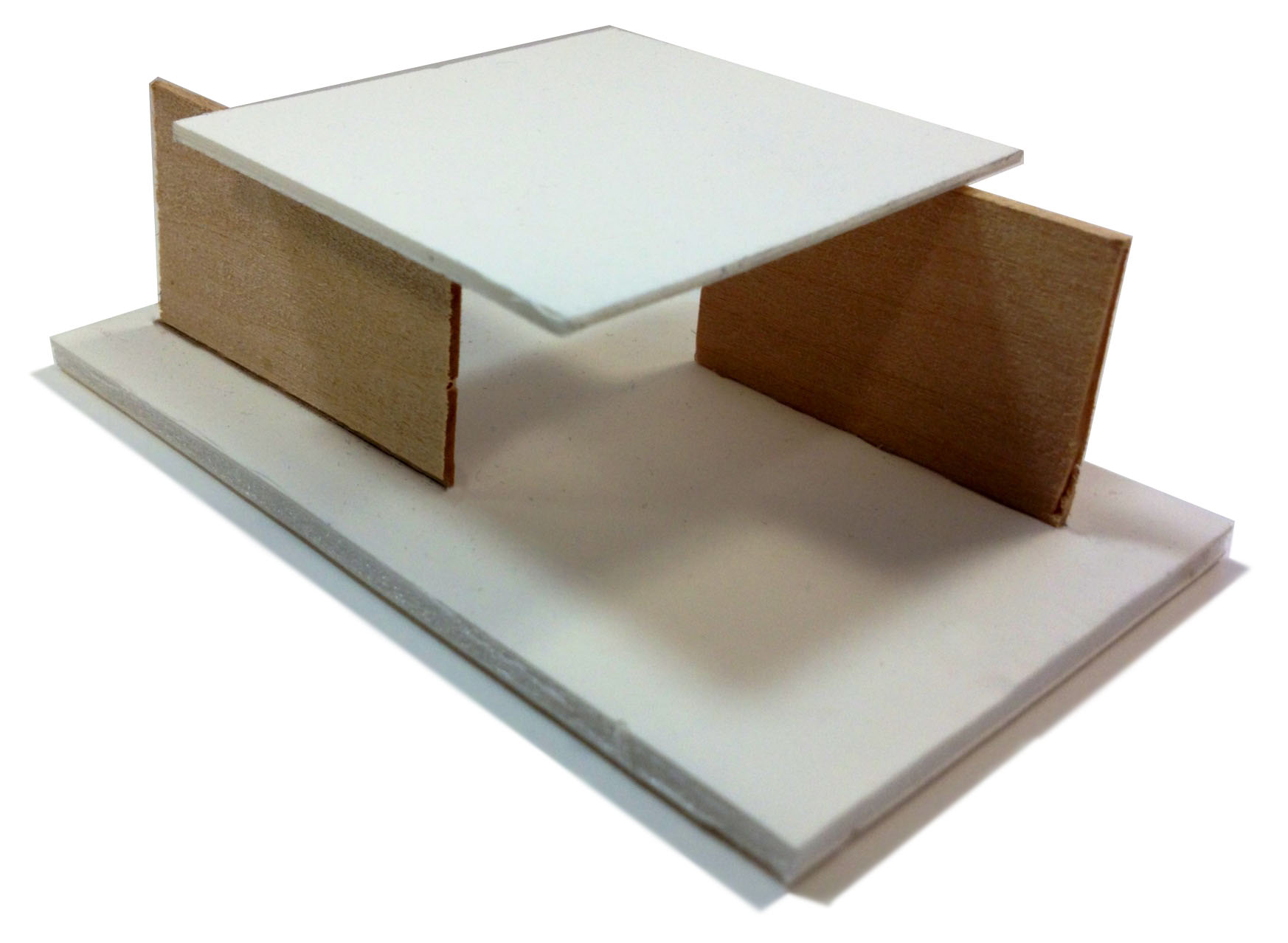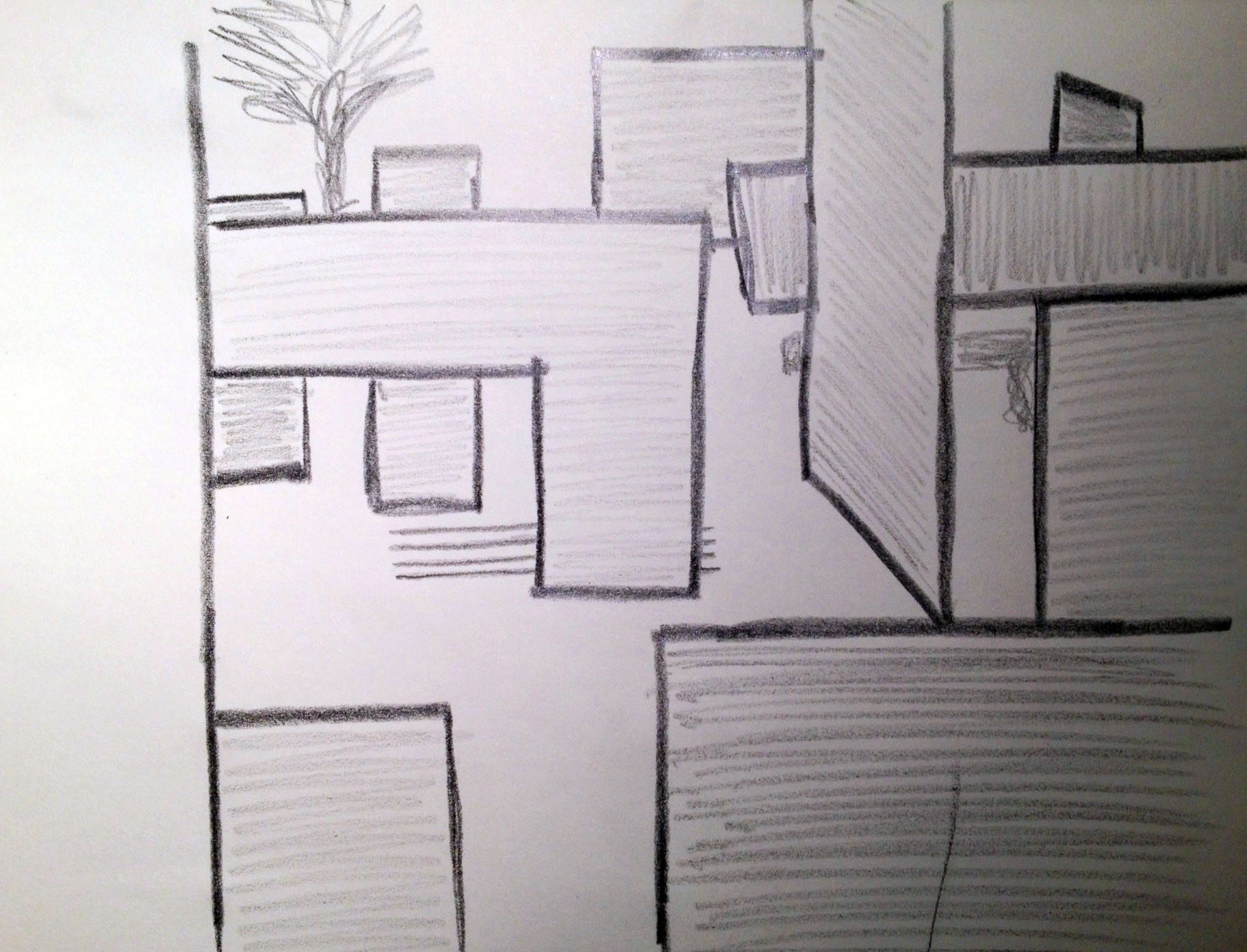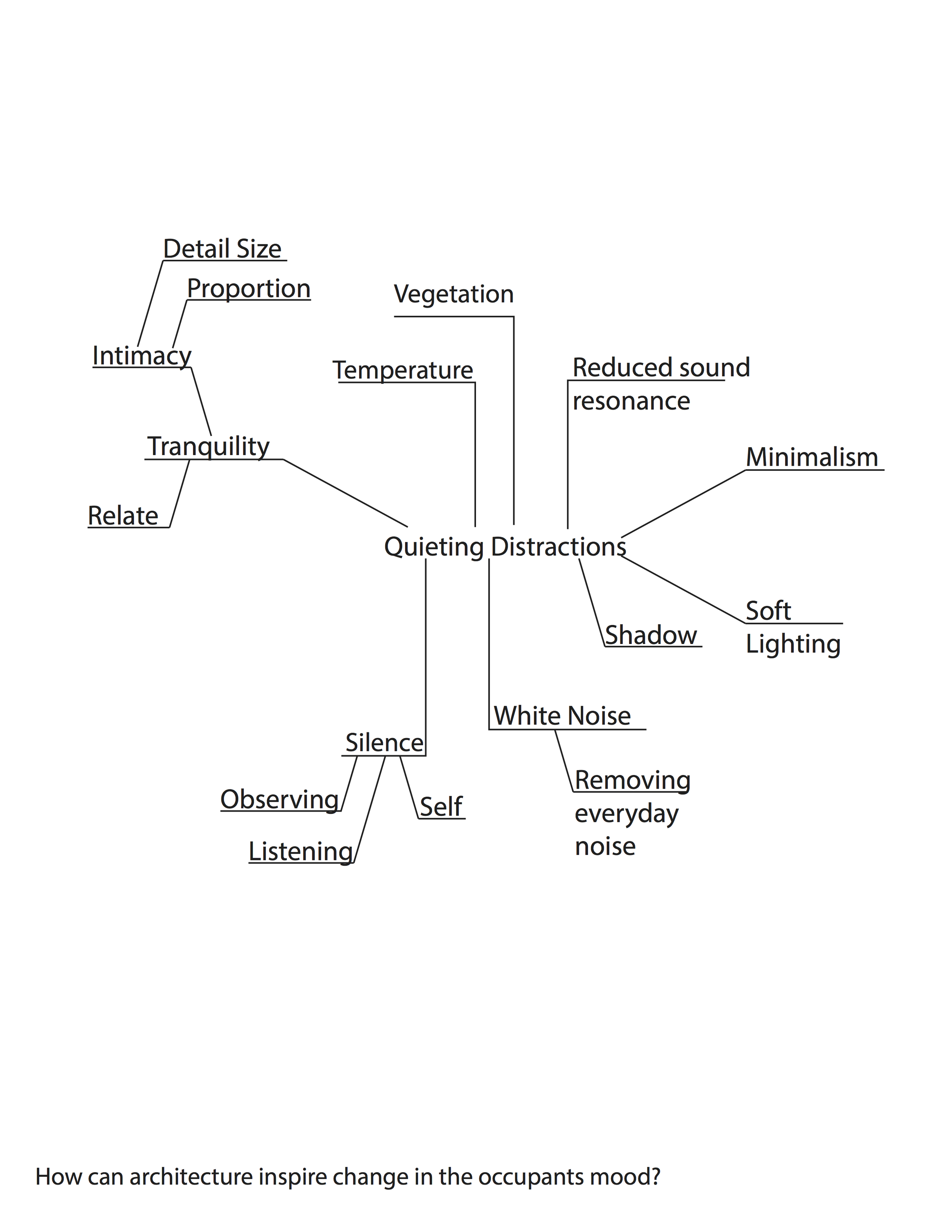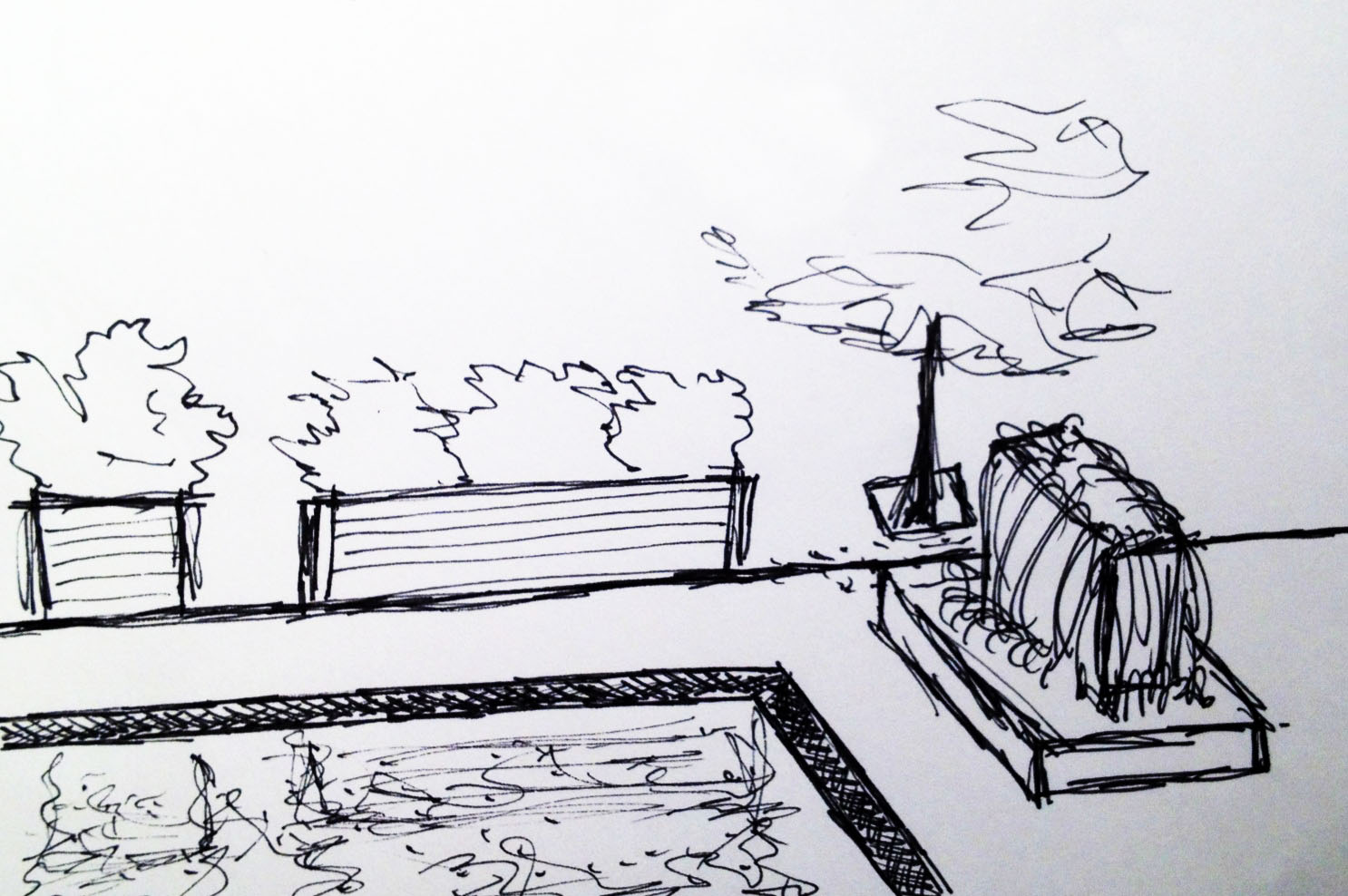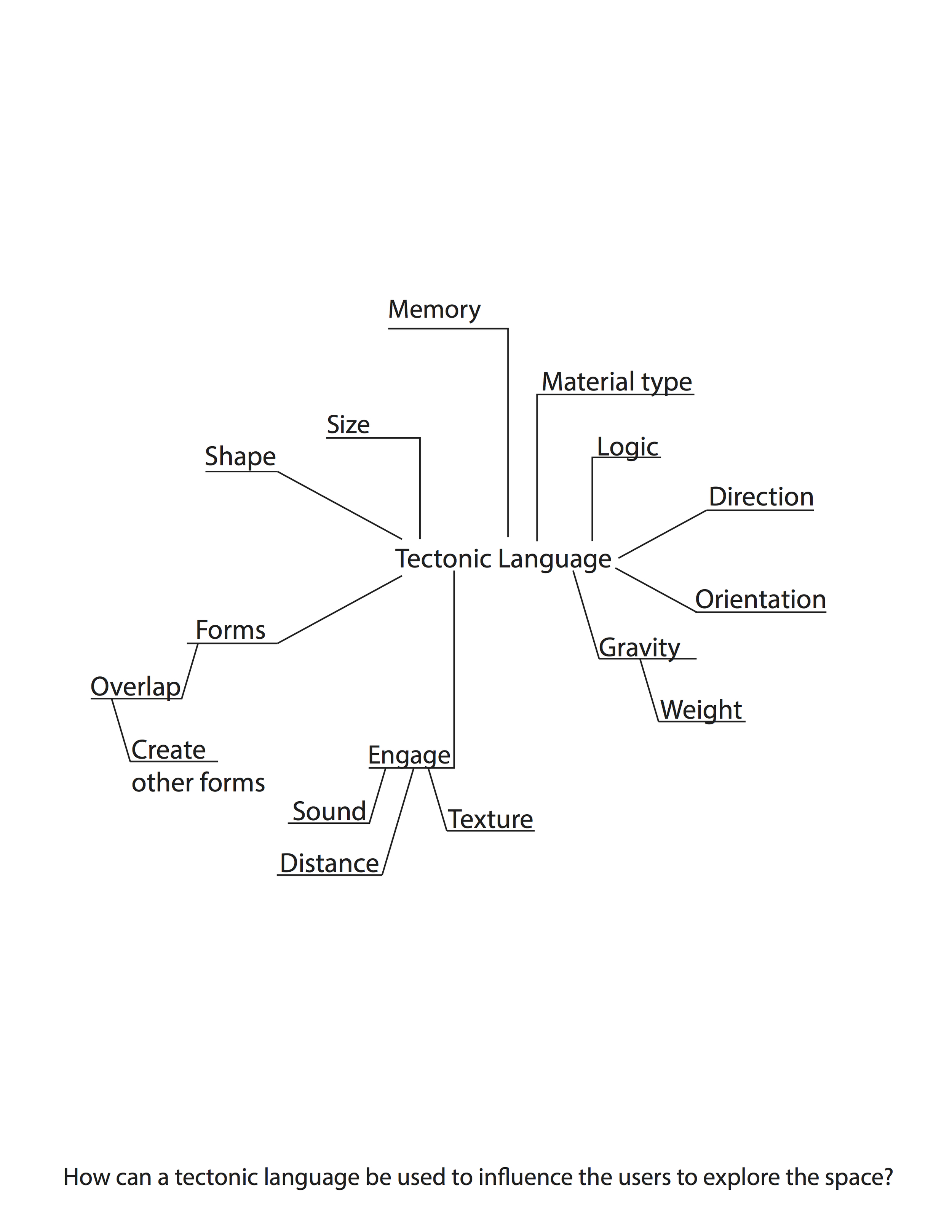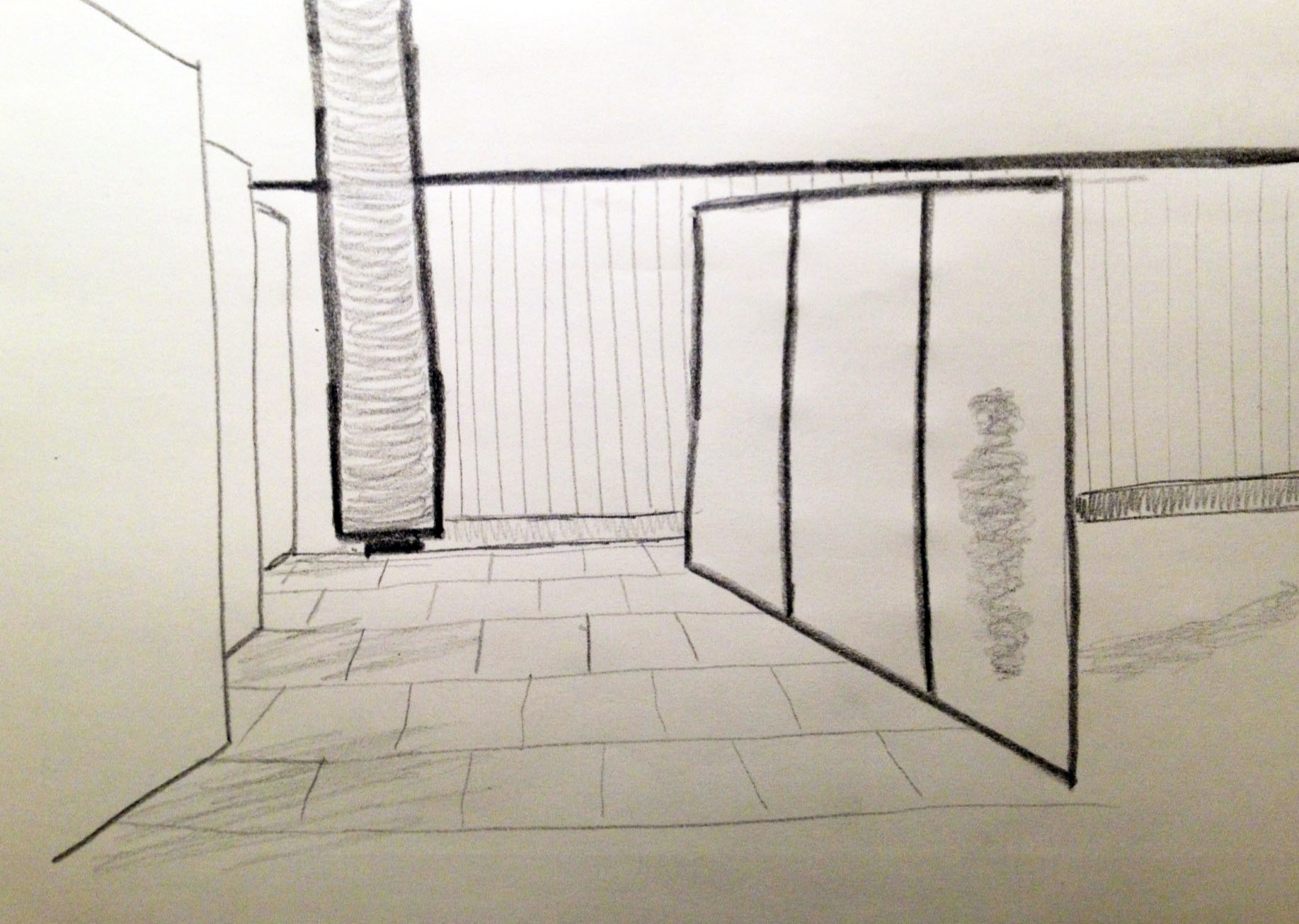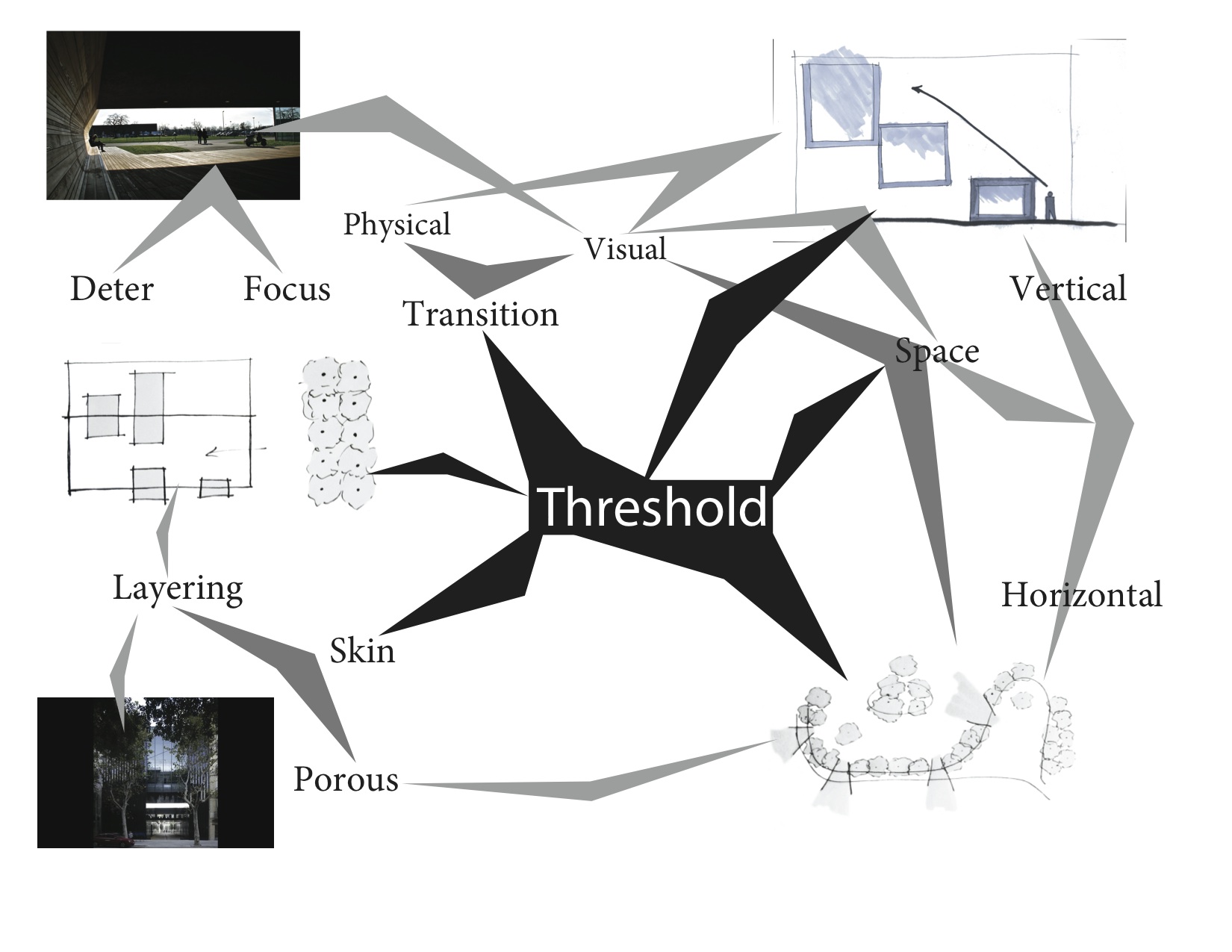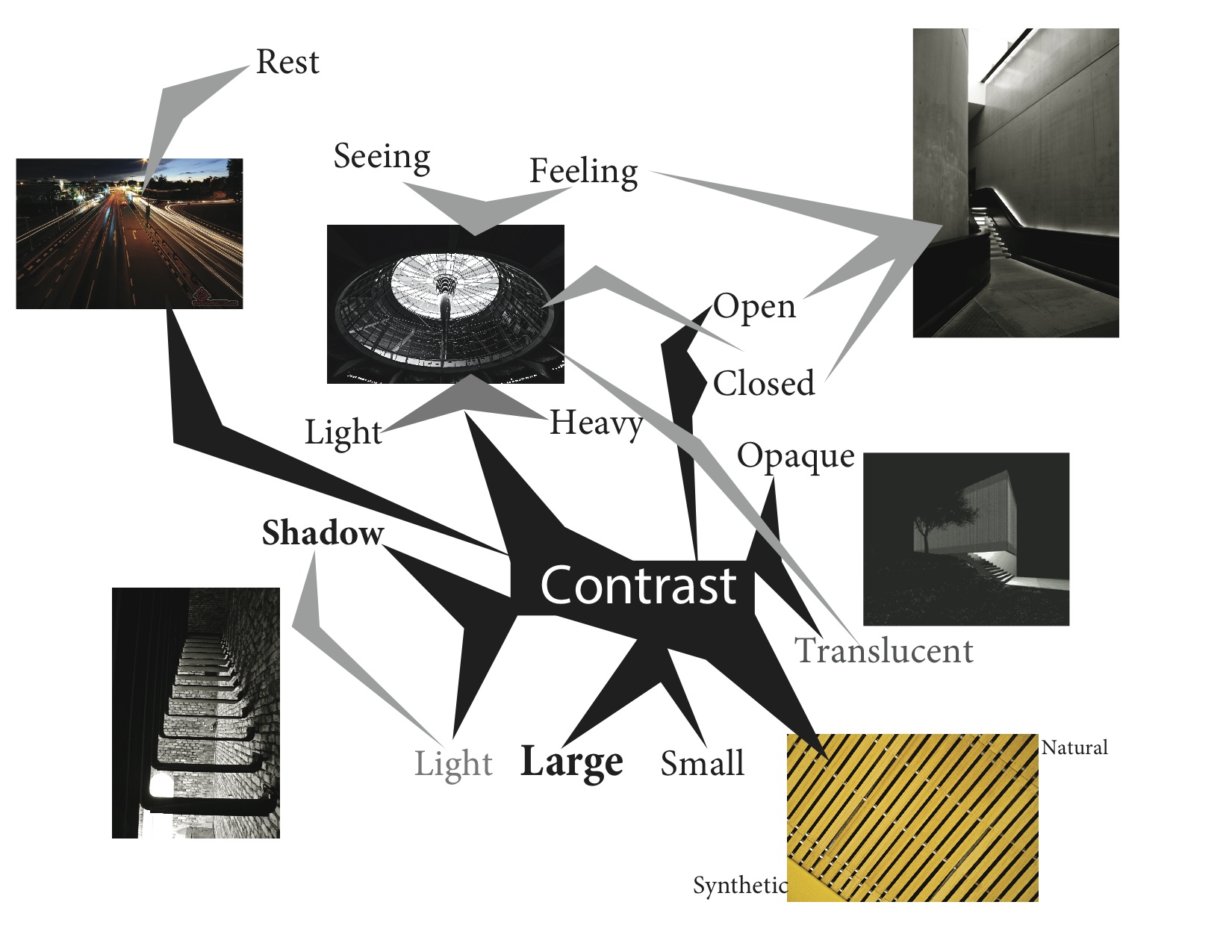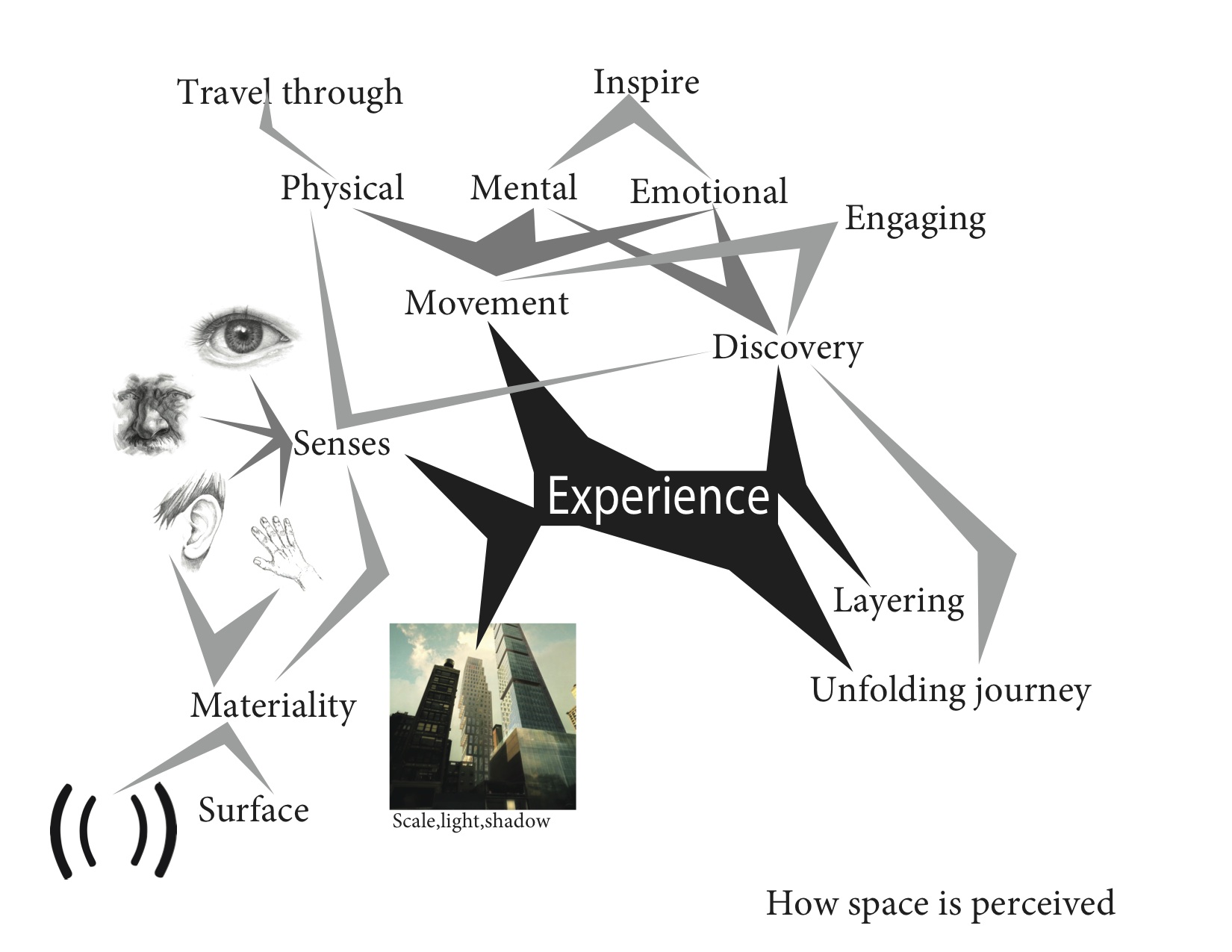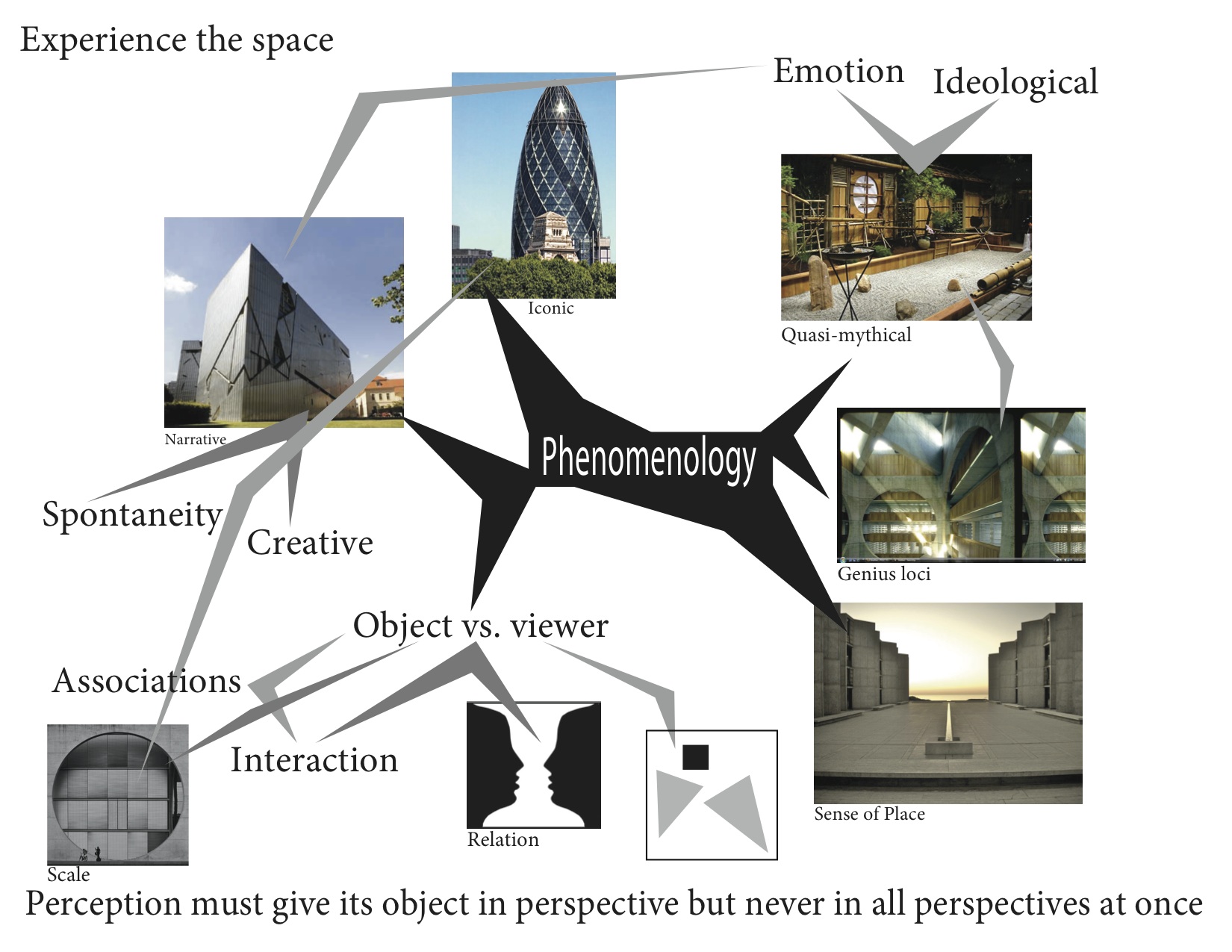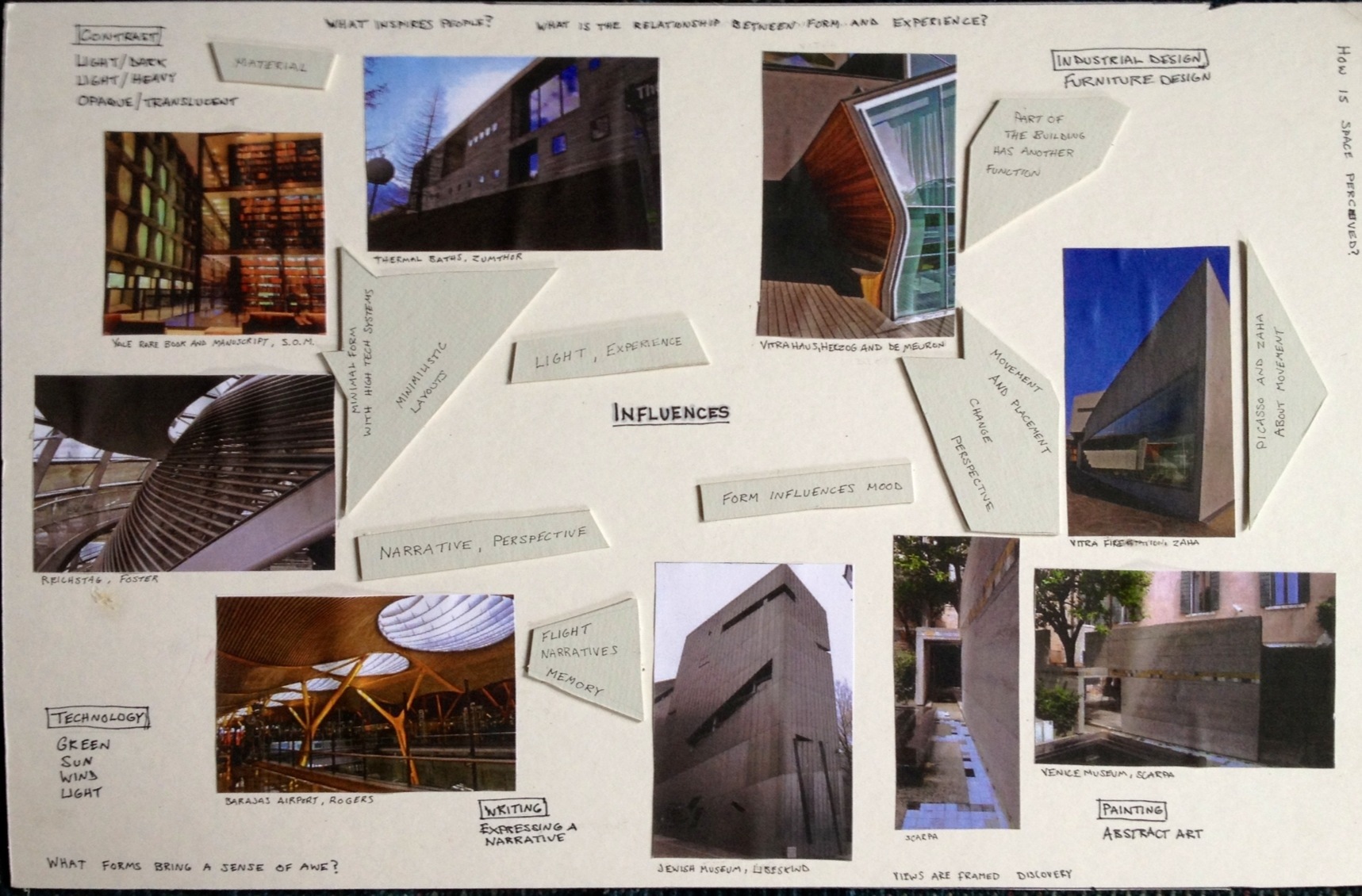Wandering down the street you come across a glass wall. As you get closer the view inside opens up to you and its activities spill outwards. As you enter through the circulation space, you see places for meeting, rest and gathering. They penetrate into your pathway. Few elements hint at borders between uses and nothing definite is apparent. As you walk forward you lean against a railing, noticing people below and above you are doing the same. You look outward and see different activities happening on each level and terrace. As you run your hands down the railings to the lower levels, different rooms and areas move into and away from your path of travel. You traverse down the path and reach a glass wall. You see beyond out to the exterior, there are columns and covered areas. The landscape beyond is halted by a garden wall, which acts as the partial limits to the covered areas. From the sides of the wall you can see out into the extends of the landscape beyond.
TP2: Program
TP: 2 Landmarks and Surroundings Analysis
In continuance of the site exploration it was necessary to observe the surrounding conditions. Utilizing waypoints the proposed site uses surrounding landmarks and buildings like the walls in the preliminary study models are used. These landmarks will pose as an untagible boundary that increases the perceived size of the space and creates a continuation of space.
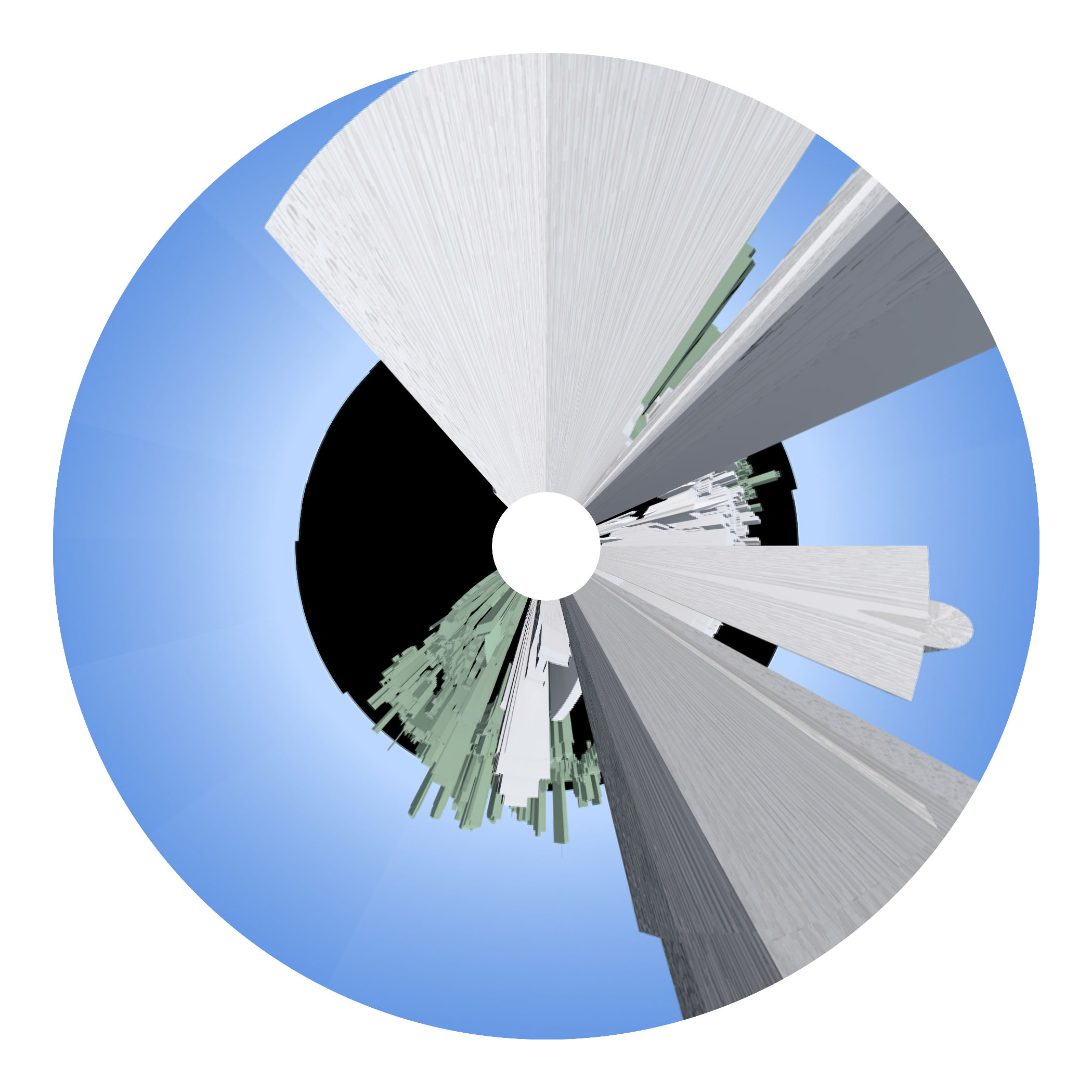
TP2: Site Analysis
The first abstract site mode shows the density and height qualities that were necessary for the chosen site. The wood grids represent low residentail areas while the longer horizontal pieces represent mid rise office and finally the tall upright sticks represent highrise buildings.
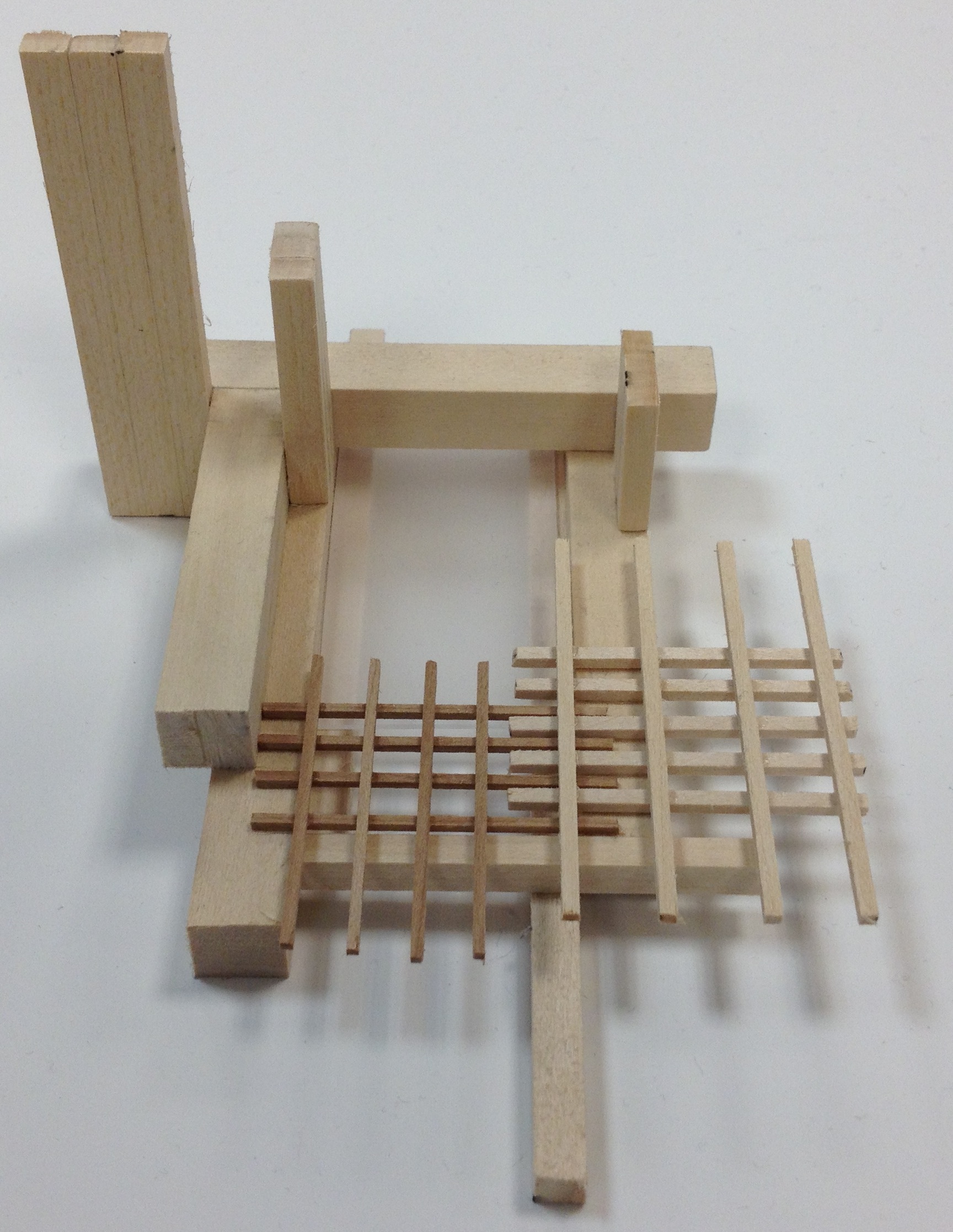
The second abstract site model shows the density and hight qualitites that were necessary for the chosen site in section. The grid represents the dense structure of the adjacent buildings and the more dispersed sticks represent larger and more open spaces.
TP2: Site
During the site explorationg process a series of site qualities were established. This consisted of a smaller site in the sense of square footage, and located within an area that was dense but also allowed for views beyond the immediate area. After studying three sites the site at 380 Stuart Site was chosen for its variety in height, density and program. This site is adjacent to neighborhoods that have landmark buildings density and areas for growth to use as references to mark the buildings limits and extends.
Site analyzed:
380 Stuart Street
Back Bay
This site satisfied the density qualitites necessary, the variety of heights, denisty and uses.
Site analyzed:
Fedaral Street and Milton Place
Boston Financial District
This site satisfied the density qualitites necessary but lacked a variety of heights, denisty and uses.
Site analyzed:
Valenti Square. North Washington Street and Beverly Street
Rose Kennedy Greenway
This site satisfied the small square footage but lacked a variety of heights, denisty and uses. The site was too open in it’s surroundings and lacked connections to areas around it.
TP2: Topic
The thesis topic was researched by a series of sketches and study models. The research of phenomenal transparency lead to precedent studies from Corbusier’s house at Garches, his League of Nations building complex and Mie van Der Rohe’s Barelona Pavillion. These examples are only a few of many that illustrate how architects manipulate space and its dimensional qualitites.

The sketches and model are experiments with layering overlapping and insinuating borders though planes and barriers. They play with what is foreground middle ground and background and create space without necessarily enclosing it.
These three models made of wood, foam core and matte board all create spaces with different types of spatial ambiguity. They show different spatial orders working together harmoniously. The first model uses a horizontal plane to create the first border and then the vertial plane beyond to act as a second extension of the space. The second model model creates spatial ambiguity vertically by acting first as a stacked rectangular atrium but then can also be equally viewed as an “L” shaped atrium. The third model uses shifted vertical planes to blur where the extents of the rectangular space is while the horizontal defines an inner square area that neither overpowers or destorys the other order.
Excercise 3.1: Sources, Annotated Bibliography Continued
Hayes, Michael. “Critical Architecture: Between Culture and Form” MIT Press Perspecta, Vol. 21 (1984), pp. 15-29 This source is a critical article on culture and form. This article analyzes architecture’s relationship to the changing times and the needs of new generations. They support their claim through case studies and psychological academic sources. This sources is useful to the thesis because it overviews the concepts used to blend the interior and exterior. Specifically Mies van der Rohe’s buildings where he attempted this exterior interior blending to connect people with the calm of the natural elements contrasting the hectic modern lifestyle.
Rowe, Colin, Robert Slutzky. “Transparency: Literal and Phenomenal” MIT Press Perspecta, Vol. 8 (1963), pp. 45-54
This source analyzes cubist artwork to describe the dynamic of phenomenal transparency. They attest that overlapping forms, that do not destroy one another’s shapes, are awarded transparency because the viewer cannot distinguish which is in the foreground and which is in the background. This source is useful to the thesis because it explores the theories of transparency. The types of transparency used are physical, the inherent quality of the material, and phenomenal, the perceived overlapping of space. These concepts can be applied to the thesis when overlapping and merging the qualities of interior and exterior spaces.
EXERCISE 2.0: Three Mind Maps, Questions and Images
Excercise 2.0: Sources, Beginnings of Annotated Bibliography
Blau, Eve. “Transparency and the Irreconcilable Contradictions of Modernity,” Praxis 9 This article defines transparency through its visual and physical phenomena’s by the juxtaposition of spaces or the literal qualities of the materials. This article is written for architectural scholars to better understand the different types of transparencies and when to utilize them. This source is useful to the thesis because it helps define elements that will spark the curiosity in the occupant to explore the space.
Eliasson, Olafur. “Your Engagement has Consequences.” In Experiment Marathon: Serpentine Gallery. Edited by Emma Ridgway. Reykjavik: Reykjavik Art Museum, 2009: 18-21.
This article asserts that our experiences on what we perceive are always in motion and dependent on the individual and their memory. By utilizing experiments with context and engagement they’ve shown how each situation is always in motion and different for each person. This article is useful to the thesis because its phenomenological concepts evoke a way of thinking about the “unfolding journey” as not only a physical path but also a psychological trail of interaction.
Holl, Steven, Juhani Pallasmaa, and Alberto Perez Gomez. Questions of Perception: Phenomenology of Architecture. San Francisco, CA: William Stout, 2006.
This source is a book composed of three essays that are thematically linked by the idea that all the senses are needed to completely experience architecture. They assert that human perception and phenomenology play the largest role in architecture. The authors provide evidence to this claim by referencing case studies and outlining the buildings to provide examples of how materials and methods are used. The essays are written for an audience of researchers, students and architectural scholars. This source is pertinent to the thesis because it outlines the methods necessary to engage all of the occupant’s senses, thus helping to create elements that will entice the user to embark on the “unfolding journey” this thesis seeks to create.
Frampton, Kenneth. Introduction to Studies in Tectonic Culture: The Poetics of Construction in nineteenth and Twentieth Century Architecture (Cambridge and London: MIT Press), 1-27.
This source is a chapter excerpt from a book focusing on tectonic meanings, origin and uses. The author presents a walk through the history of tectonics in different cultures, focusing on completed works and their building techniques in order to define a methodology in their use for the occupant. This book is written for an audience of researchers, students and architectural scholars. This source is useful to the thesis because it defines how tectonics has developed throughout cultures and how it can be used to engage the occupant in their surroundings.
Marder, Michael. Phenomenology of Distraction, or Attention in the Fissuring of Time and Space, Research in Phenomenology 41 (2011) 396–419
This article asserts that distractions are an emersion in situations where our perceptions are constantly changing. The author sources psychology scholars to define distraction and attention as different parts of the same concept. This article is written for students, researchers and architectural scholars. This source is pertinent to the thesis because it explains the phenomenology of distraction and helps it to better define ways to eliminate or reduce the causes.
Pallasmaa, Juhani. Six Themes for The Next Millennium. in Architectural Review. (July, 1994), 74-79.
This article critiques the direction western architecture design has moved in its principles and execution. Pallasmaa outlines his own six themes for how architecture can become more attractive in our new millennium, which he based off of the six manuscripts by Italo Calvino. This source is relevant to the thesis because of its theoretical implications that silence is more than just a lack of noise but of turning your consciousness to yourself.
